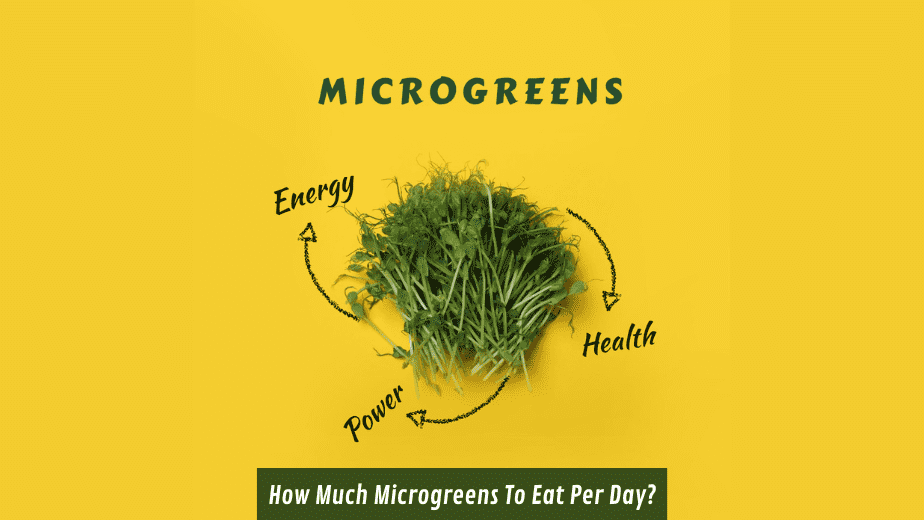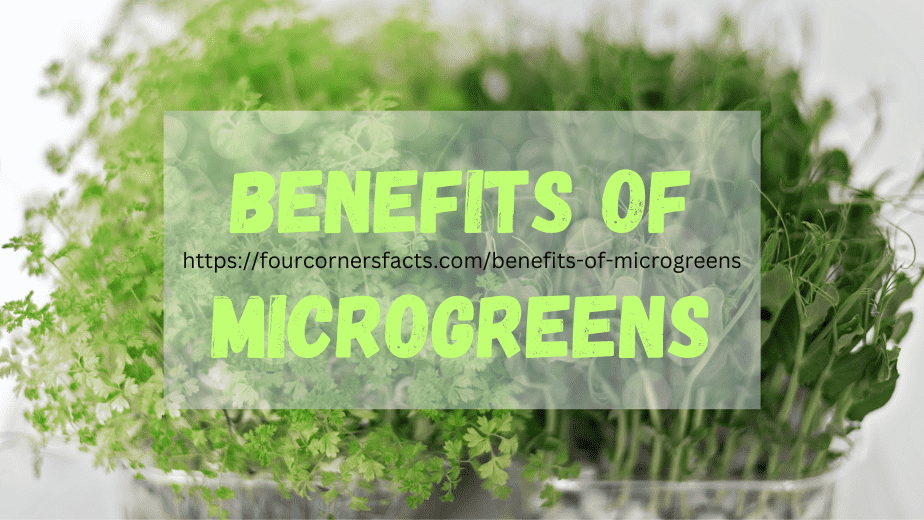Microgreens have been identified as more nutritious than full-sized greens, like tiny versions of mature greens and herbs. The flavor ranges from mild to sweet, slightly sour, or even bitter, according to the varieties. Their taste is generally considered healthy and intense. For a healthy mind and body, you must know how much microgreens to eat per day.
Although their nutrient contents vary slightly, the majority of varieties are rich in iron, zinc, potassium, copper, and magnesium.
Why Microgreens Are Healthy?
Vegetables are a great source of vitamins and minerals;
- They lower the risk of adverse health and
- Provide internal and external body benefits.
Research on microgreens shows the amount of these various nutrients is higher than that of mature greens. As such, they may have more effects to:
Lower the risk of diseases like;
- Heart.
- Alzheimer’s.
- Diabetes, and certain cancers.
These microgreens contain polyphenols and antioxidants that cause you to provide support to the immune system of your body to fight against diseases. Antioxidants can improve the form of stress that sugar might keep from getting in properly into cells, and Fenugreek microgreen tended to increase cellular sugar uptake by 25-44%.
| Note: Although this sounds encouraging, the number of studies testing microgreens specifically in these condition situations is limited, and no tests in humans could be identified. More experiments are therefore required before reliable conclusions can be drawn. |
How Much Microgreens To Eat Per Day?
Let’s get into the topic: how much microgreens are there to eat per day? Microgreens are usually considered safe to eat. Furthermore, the possibility of food poisoning is one worry. However, microgreens have a much lower potential for the growth of bacteria than sprouts.
Microgreens are less warm and humid than sprouting environments, and only leaves and stems are consumed instead of seeds and roots.
A handful of micros in a day can fulfill the requirement of nutrients and minerals in your body.
However, it is essential to buy seeds from a reputable company and to choose growing media that is free of any infection by harmful bacteria, such as Salmonella and E. coli, in case you want to grow microgreens at home.
How To Eat Microgreens In Diet?
Microgreens in your food can be included in several ways. These can be applied to a range of foods, such as burgers, wraps, and salads. It can also be blended in or juiced for smoothies. A famous example of microgreen juice is wheatgrass juice.
They can also be used as pizzas, soups, omelets, and other hot dishes.
Don’t forget to check our more healthy habits with our expert advice.
Why Are Microgreens So Expensive?
Firstly, we will disclose the secret of the sources from where you can get the seeds for your micros, and then we will discuss the reason why microgreens are so expensive.
Microgreens is a combination of two words: micros and greens. These are packed in nutrients – a tiny form of full-grown greens. So, the part of collecting seeds begins when the crop is fully grown; wait for a few days to let dry the seed portion for the next plant, and before they fall into the soil, cut them out and squeeze them gently to take seeds in the pot or anything else you would prefer to collect.
These are untreated seeds that we can use to grow greens on our shelf in the kitchen. These micros are a top trendy ingredient in dishes; it only takes 10 to 15 days to get ready for harvest. Usually, more seeds are required for micros than mature greens. Since these are favorites for chefs and are used in many dishes’ best taste and flavor – it is a profitable business to supply in hotels, and this is the reason they are a little bit expensive.
What Are The Healthiest Microgreens?
Arugula:
The glycosylates, ascorbic acid (vitamin C), and phenols are present in the microgreen, which are assumed to lead to avoiding toxins and avoiding environmental stress.
Broccoli:
It contains few calories, and it is cruciferous (sulfur-containing). Great to add taste to your pesto or make a spread of hummus and crudités.
Clover:
When you are looking for a mini nutrient pack, you should try clover shoots in your diet. Clover shoots supply calcium, magnesium, iron, and zinc to your body, and for a tasty crunch, just sprinkle over your salad.
Kale:
Kale is the best source for your desire for vitamin C. Kalecan add Kale in your Kale and radKalesalad.
PeKaleoots:
With a very mild flavor, pea shoots can be eaten raw or cooked all over the year. Pea shoots are a great source of Fiber, Vitamin C, and Vitamin A for the human body.
Furthermore, this micro, like other microgreens, grows quickly and can be harvested in almost three weeks.
Radish Sprout:
If mild is not the flavor you are looking for, then try radish sprouts that taste spicy and higher in nutrients than the mature green. These are also used for the production of calcium, iron, magnesium, phosphorus, potassium, and zinc -vitamins A, B, C, and E and K are also present in the chart of nutrition.
It is not the end; Radish sprouts are high in essential amino acids and chlorophyll and have all sorts of benefits, from cancer prevention to digestive assistance. These microgreens do include several fabrics that are important to keep things going smoothly, as we are all conscious.
Sunflower:
Sunflower shoots are a powerful source of the supply of essential amino acids, iron, potassium, copper, calcium, magnesium, and phosphorus. They are exceptionally high in zinc, which provides numerous advantages, including an improvement in the immune system and digestive regularity.
Wheatgrass:
The vitamins A, B, C, and E are found in wheatgrass. It also contains selenium with the presence of other vitamins – selenium is a good antioxidant and has abilities to fight against some cancer. The list is not over yet of its benefits; wheatgrass improves blood circulation, minimizes the risk of heart disease, and boosts the immune system.
You can add this amazingly beneficial microgreen to your diet for your health benefits. Wheatgrass smoothies and juices are famous for being an instant drink in your breakfast and lunch.
Conclusions
I hope we answered all your questions that you were looking for regarding tiny greens, including how much microgreens to eat per day. They are tasteful and can be blended effectively into your diet in many ways. These are also very healthy in general and can even reduce your risk of certain diseases.
Because it’s easy to grow at home, it’s an exceptionally inexpensive way to improve nutrient intake without the purchase of large quantities of vegetables. They’re an excellent addition to your food.
FAQs
What is the serving size of microgreens?
For instance, 40 grams of buckwheat microgreens per day is the recommended maximum. At least 125 grams, or around 1.5 cups, of microgreens per day may help you fulfill your micronutrient needs. These are just recommendations, however, and the precise dosage will depend on the microgreens’ distinct nutritional profiles and the nutritional needs of the person consuming them.
However, it’s best to eat a range of microgreens so that you can benefit from the different nutrients that each type has to offer. Raw or cooked, you can eat them, and you can put them in soups, salads, and other foods as well.
Is it possible to eat too many microgreens?
Due to the high fiber, mineral, and vitamin content in these young plants, eating too many microgreens may make you sick, giving you diarrhea or other stomach problems. Also, too much of some vitamins can be harmful, especially vitamin A.



